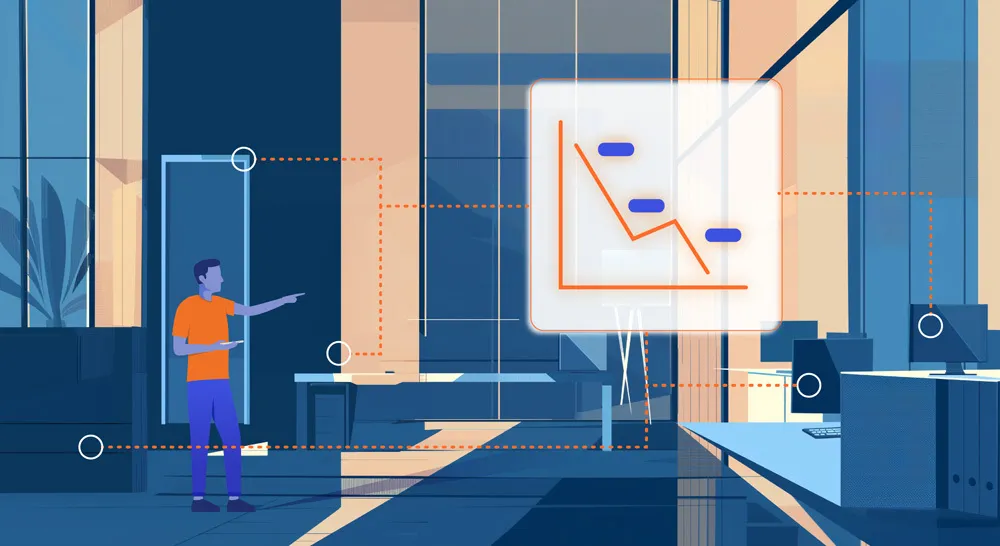
CYPFER’s Proven Approach to Ransomware Recovery: 5 Essential Steps to Reclaim Your Data
The Crucial Role of a Ransomware Recovery Plan
A ransomware attack can be devastating, encrypting critical data and demanding a ransom for its release. At CYPFER, we understand that every moment counts when dealing with such incidents. Our comprehensive ransomware recovery plan ensures a swift and efficient response to minimize damage and restore operations. With extensive global experience, CYPFER has successfully managed thousands of ransomware incidents worldwide, providing unmatched expertise and peace of mind to our clients.
Understanding a Ransomware Recovery Plan
A ransomware recovery plan is a detailed playbook designed to address the immediate aftermath of an attack. It includes an incident response team, a communication strategy, and step-by-step instructions to recover your data and mitigate the threat. Rapid response is vital to recovering your files and avoiding significant financial and reputational losses.
Consequences of Lacking a Ransomware Recovery Plan
In the world of ransomware, failing to plan is planning to fail. Delays in response can result in severe data loss, business disruption, and a tarnished reputation. Recent research reveals the harsh reality:
- The average cost of a ransomware attack can reach $4.54 million (IBM).
- It can take an average of 326 days to identify and contain an attack (Verizon).
- 50% of small businesses impacted by ransomware may struggle to remain profitable within a month (National Cyber Security Alliance).
5 Steps for Effective Ransomware Data Recovery
While prevention is the best defense, here are the critical steps to recover your data if an attack occurs:
1. Activate Your Incident Response Plan
A well-structured incident response (IR) plan is crucial. It should include:
- Initial actions like gathering log data to understand the scope of the attack.
- A communication strategy involving internal stakeholders (IT, security, legal) and external parties (law enforcement, clients, response teams).
- Compliance with legal requirements for data breach notifications.
- Steps to maintain or restore affected business functions.
- Guidelines for conducting a thorough investigation and continuous monitoring.
- A review process to improve long-term security measures.
At CYPFER, our incident response approach is tailored to operate swiftly and effectively, reducing downtime and mitigating risks.
2. Identify Attack Method and Isolate Affected Systems
After confirming an attack, execute your IR plan:
- Pause: Avoid rash actions like disconnecting systems immediately without understanding the attack. Premature actions can alert attackers and worsen the situation.
- Evaluate: Analyze log data to determine the attack method, identify infected systems, and understand how the ransomware spread.
- Isolate: Disconnect affected and vulnerable systems to prevent further spread of the ransomware.
3. Ensure Robust Data Backups
Data backups are your best ally in recovery:
- Isolate backups: Keep backups disconnected from the main network to protect them from the attack.
- Incremental backups: Use methods that regularly update backups to minimize data loss.
- Immutable storage: Store backups in formats that prevent overwriting to ensure a reliable recovery source.
- Diversified backups: Use multiple backup types and locations to enhance resilience.
- Regular testing: Routinely test backups to confirm their effectiveness and reliability.
4. Utilize Data Recovery and Decryption Tools
If backups are unavailable or compromised, consider these alternatives:
- Operating system tools: Some systems have built-in recovery features that might restore data to a previous state.
- Data recovery software: Third-party tools can sometimes recover corrupted data, depending on the ransomware variant.
- Decryption tools: Security researchers may have developed tools to decrypt specific ransomware variants, offering a potential recovery route.
5. Strengthen Security Measures
Prevent future attacks by enhancing your security posture:
- Implement multifactor authentication (MFA): Ensure all remote access requires MFA to add an extra layer of security.
- Change default passwords: Replace default passwords with strong, unique ones to close easy entry points for attackers.
- Centralized logging: Aggregate and protect log data to aid in breach investigations and improve incident response.
- Monitor Active Directory: Secure key components of AD to prevent attackers from exploiting it to infiltrate deeper into your network.
- Cybersecurity training: Educate your team on security best practices and conduct regular drills to prepare for potential threats.
At CYPFER, we offer comprehensive ransomware recovery services tailored to your organization’s needs. Our expert team works tirelessly to ensure your data is secure and your business can recover swiftly from any attack. Our global experience and expertise ensure that no matter where you are, CYPFER is ready to assist.
Your Complete Cyber Security Partner:
Every Step, Every Threat.
At CYPFER, we don’t just protect your business—we become part of it.
As an extension of your team, our sole focus is on cyber security, ensuring your peace of mind. From incident response and ransomware recovery to digital forensics and cyber risk, we integrate seamlessly with your operations. We’re with you 24×7, ready to tackle threats head-on and prevent future ones.
Choose CYPFER, and experience unmatched dedication and expertise. Trust us to keep your business secure and resilient at every turn.

Get Cyber Certainty™ Today
We’re here to keep the heartbeat of your business running, safe from the threat of cyber attacks. Wherever and whatever your circumstances.
Contact CYPFER





